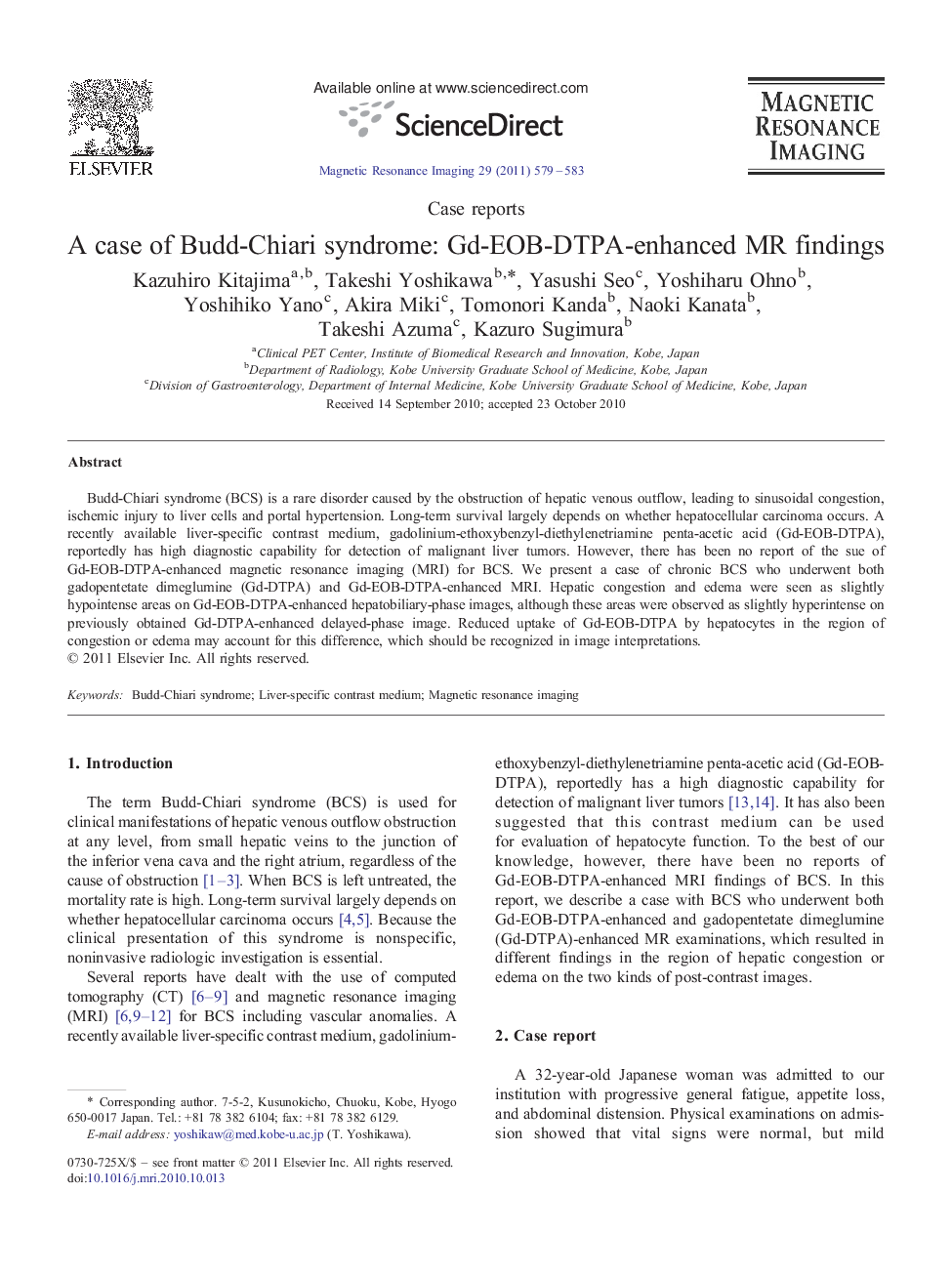| Article ID | Journal | Published Year | Pages | File Type |
|---|---|---|---|---|
| 10712764 | Magnetic Resonance Imaging | 2011 | 5 Pages |
Abstract
Budd-Chiari syndrome (BCS) is a rare disorder caused by the obstruction of hepatic venous outflow, leading to sinusoidal congestion, ischemic injury to liver cells and portal hypertension. Long-term survival largely depends on whether hepatocellular carcinoma occurs. A recently available liver-specific contrast medium, gadolinium-ethoxybenzyl-diethylenetriamine penta-acetic acid (Gd-EOB-DTPA), reportedly has high diagnostic capability for detection of malignant liver tumors. However, there has been no report of the sue of Gd-EOB-DTPA-enhanced magnetic resonance imaging (MRI) for BCS. We present a case of chronic BCS who underwent both gadopentetate dimeglumine (Gd-DTPA) and Gd-EOB-DTPA-enhanced MRI. Hepatic congestion and edema were seen as slightly hypointense areas on Gd-EOB-DTPA-enhanced hepatobiliary-phase images, although these areas were observed as slightly hyperintense on previously obtained Gd-DTPA-enhanced delayed-phase image. Reduced uptake of Gd-EOB-DTPA by hepatocytes in the region of congestion or edema may account for this difference, which should be recognized in image interpretations.
Related Topics
Physical Sciences and Engineering
Physics and Astronomy
Condensed Matter Physics
Authors
Kazuhiro Kitajima, Takeshi Yoshikawa, Yasushi Seo, Yoshiharu Ohno, Yoshihiko Yano, Akira Miki, Tomonori Kanda, Naoki Kanata, Takeshi Azuma, Kazuro Sugimura,
